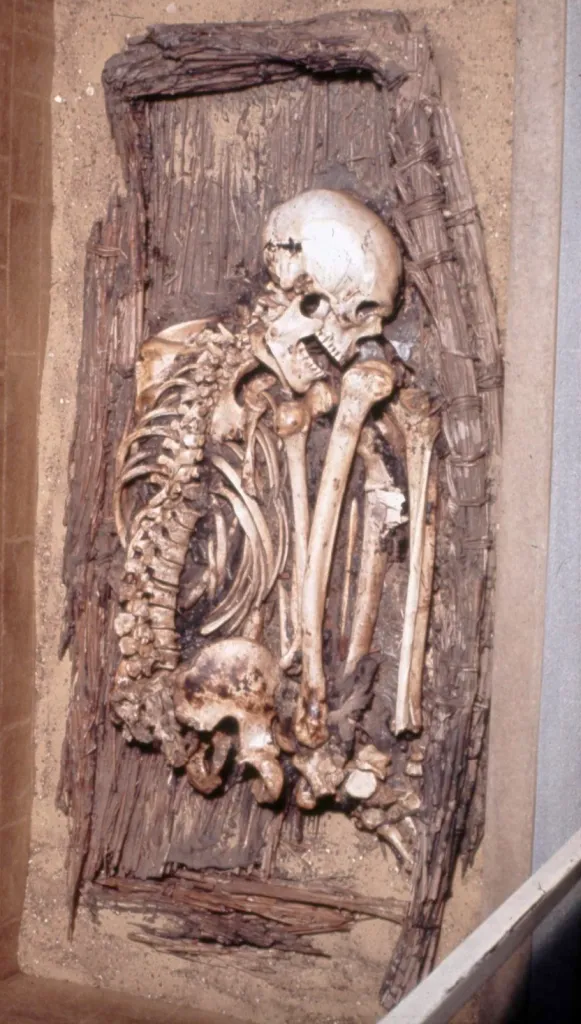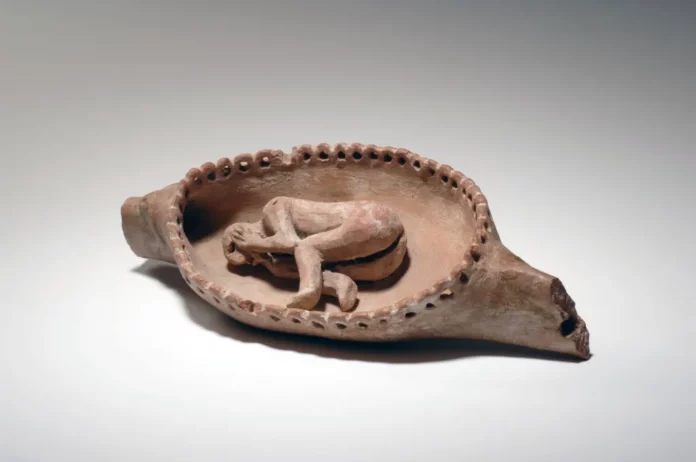In the ancient necropolis of Tarkhan, nestled along the west bank of the Nile River, a remarkable discovery awaited the excavators. Tarkhan, located about 50 kilometers south of Cairo, was a significant burial ground for the ancient Egyptians, housing tombs from various periods. The majority of these tombs dated back to the Early Dynastic period around 3100 BC, a time when the Egyptian state was first formed. Among the numerous graves unearthed by the famed archaeologist Flinders Petrie, one in particular stood out—a human skeleton, likely from the 1st Dynasty, buried within a reed basket.
This skeleton, that of an adult, was found in a fetal position, carefully laid within a cane basket. Petrie’s extensive excavation over two seasons revealed around 2,000 graves, mostly simple holes in the ground that belonged to ordinary individuals. Yet, a few First Dynasty mastabas decorated with a palace facade hinted at more significant burials. Among the treasures uncovered were King Narmer’s tomb with several seal impressions and the Tarkhan garment, one of Egypt’s oldest outfits.

The skeleton in the reed basket presented an intriguing find. The skull showed no visible fractures, and all the teeth seemed to be present, although the mouth gaped open in eternal silence. Many ribs were displaced at the costovertebral junction but remained unbroken. The lower dorsal region of the spinal column was also displaced, showing prominent osteoarthritic changes with lipping in the lumbar area, though the intervertebral discs appeared normal. The long bones bore no clear fractures, and the right foot was displaced. Lines of halted growth were visible on the lower extremities of the tibiae.

The remnants of the basketwork casket, painstakingly preserved with paraffin wax by the excavator, indicated it was constructed just large enough for a contracted burial. The reeds used for the sides and ends of the coffin were bundled together before the final assembly, though the entire upper half was missing. Measuring 117 cm in length and 58.5 cm in width, the coffin held the 158 cm tall skeleton within its confines.
Today, this fascinating piece of ancient history, cataloged as EA52887, resides in the British Museum collection. However, it is not currently on display for the public. The story of the skeleton in the reed basket from Tarkhan remains a poignant reminder of the rich and complex tapestry of life and death in ancient Egypt.
Source: https://egypt-museum.com/early-period-skeleton/




